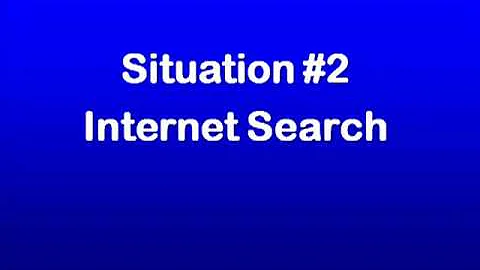Discovering and Fixing Duplicate Content on Your Website
Table of Contents
- Introduction
- What is Duplicate Content?
- How to Find Duplicate Content
- Manual Checking
- Online Tools for Finding Duplicate Content
- Fixing Duplicate Content
- Canonical Tags
- Redirection
- Avoiding Duplicate Content for Improved Ranking
- Conclusion
- Resources
- FAQ
Introduction
Duplicate content is a significant issue for websites, as it can confuse search engines and affect ranking. Whether the same content exists on different URLs or there are variations of content that are similar, it is essential to identify and address duplicate content to maintain website integrity. In this article, we will explore what duplicate content is, how to find it, and the methods to fix and avoid it effectively. By understanding and implementing these strategies, you can ensure that your website remains unique and search engine-friendly.
What is Duplicate Content?
Duplicate content refers to identical or highly similar content that exists on multiple URLs or within different sections of a website. It can occur when the same content is used on separate web pages or when variations of the same content are published. Search engines struggle to determine which content should be ranked higher, leading to confusion and potential penalties for the website. Duplicate content can harm search engine optimization (SEO) efforts and diminish the user experience.
How to Find Duplicate Content
There are two main ways to find duplicate content: manual checking and using online tools.
Manual Checking
Manual checking involves comparing the text of your own content and identifying similarities manually. This can be done by copying and comparing paragraphs from different URLs or by using online plagiarism detection tools like Copyscape. While manual checking provides a more precise analysis, it is time-consuming and may not be feasible for larger websites with extensive content.
Online Tools for Finding Duplicate Content
Several online tools are available to assist in finding duplicate content efficiently. These tools analyze the content of your website and provide detailed reports highlighting any duplicate or similar content. Tools such as Siteliner, Google Search Console, and Copyleaks can help identify duplicate content issues and provide recommendations for improvement.
Fixing Duplicate Content
Once duplicate content is identified, it is crucial to fix it promptly to maintain search engine rankings and user experience. Two common methods to address duplicate content are through canonical tags and redirection.
Canonical Tags
Canonical tags inform search engines about the preferred version of duplicate content. By adding a canonical tag to the primary page, you can indicate to search engines which URL should be considered the original and authoritative source. This helps avoid confusion and consolidates the ranking power to the desired page.
Redirection
Redirection involves redirecting duplicate URLs to their primary counterparts. This is usually done through 301 redirects, which permanently redirect one URL to another. This method ensures that users and search engines are redirected to the desired URL, minimizing the impact of duplicate content on rankings.
Avoiding Duplicate Content for Improved Ranking
Preventing duplicate content is crucial for maintaining a strong online presence. To avoid duplicate content, consider implementing the following practices:
- Create unique and valuable content.
- Use canonical tags to indicate the preferred version of any duplicate content.
- Implement redirects for duplicate URLs.
- Regularly monitor and update content to ensure uniqueness.
- Use proper URL structure and avoid URL parameters that generate duplicate content.
Adhering to these practices will help search engines understand your website's content hierarchy and avoid sifting through duplicate versions to determine the most relevant page for ranking.
Conclusion
Duplicate content can negatively impact a website's SEO efforts and user experience. By understanding what duplicate content is, how to find it, and the methods to fix and avoid it, website owners can ensure their content remains unique and search engine-friendly. Regularly checking for duplicate content and implementing best practices will help maintain a strong online presence and improve search engine rankings.
Resources
FAQ
Q: Why is duplicate content harmful?
A: Duplicate content can confuse search engines and affect ranking. It diminishes the uniqueness and relevance of the website's content, leading to potential penalties and decreased visibility.
Q: Can duplicate content affect user experience?
A: Yes, duplicate content can confuse visitors and make it harder for them to find the most relevant information. It can also undermine the credibility of the website.
Q: Should I manually check for duplicate content on my website?
A: Manual checking can be effective for smaller websites, but it is time-consuming. Online tools are recommended for larger websites as they provide a comprehensive analysis and save time.
Q: How often should I check for duplicate content on my website?
A: It is advisable to regularly check for duplicate content, especially after making significant changes to the website's structure or content. Quarterly or biannual checks are a good practice.
Q: What are some best practices to avoid duplicate content?
A: Creating unique and valuable content, using canonical tags, implementing redirects, and regularly updating content are key practices to avoid duplicate content.
Q: Can duplicate content result in search engine penalties?
A: While duplicate content does not necessarily incur direct penalties, it can lower a website's rankings and visibility in search engine results due to dilution of relevance signals.
Q: Are there any SEO benefits to fixing duplicate content?
A: Fixing duplicate content enhances the clarity and relevance of a website's content, which can positively impact search engine rankings. It helps search engines understand the primary pages and improves the overall user experience.







